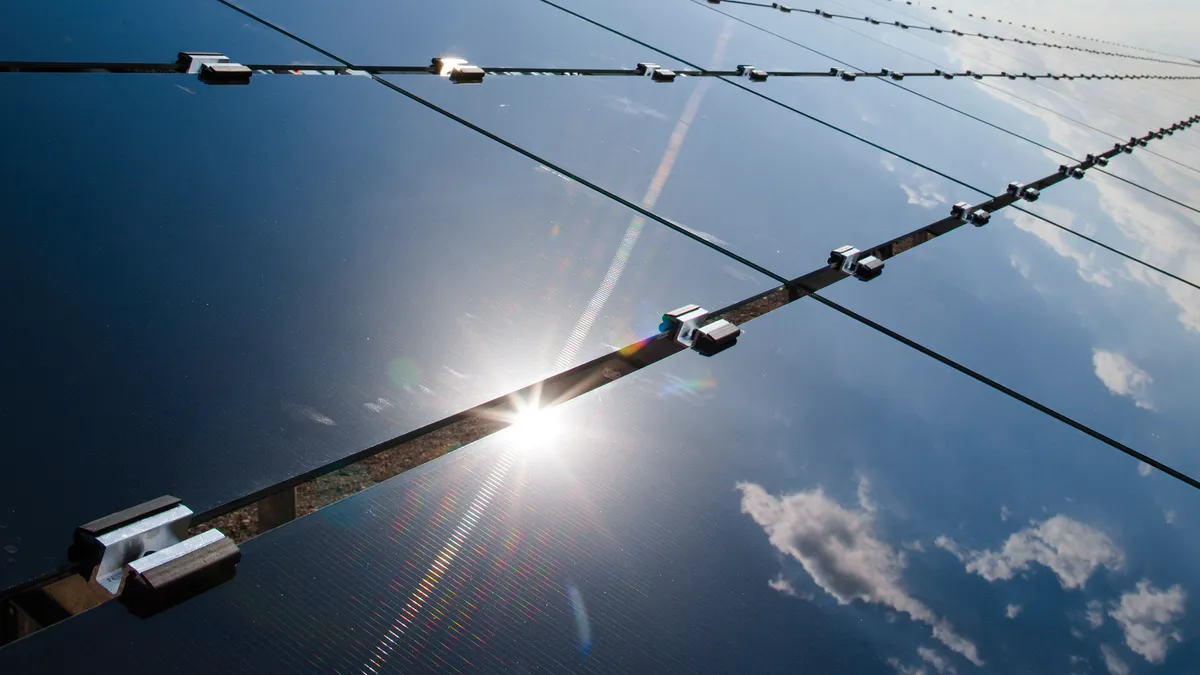Dive Brief:
- Los Alamos National Laboratory researchers are using two types of designer quantum dots to create double-pane solar windows to efficiently generate electricity and create shading and insulation, according to the Los Alamos National Laboratory.
- This method "complements existing photovoltaic technology by adding high-efficiency sunlight collectors to existing solar panels or integrating them as semitransparent windows into a building’s architecture," said lead researcher Victor Klimov.
- When quantum dots absorb blue and ultraviolet portions of the solar spectrum, the dot then re-emits a photon at a longer wavelength. That is guided to the glass edges of the window where integrated solar cells collect the light and convert it to electricity.
Dive Insight:
Renewable building materials continue their technological advances to harness as much of nature's energy as possible. Wind farms are an expanding market. Through the third quarter of 2017, the U.S. had about 84,944 megawatts of installed wind capacity, with another nearly 30,000 in development, according to the American Wind Energy Association. The segment has received more than $143 billion of investment in the past decade.
Mortenson Construction is one leader in the renewables market. CEO Dan Johnson told Construction Dive last year the company was asked to enter the wind market before they realized what an opportunity the industry was. Solar, on the other hand, was always going to be part of the company's future.
"Solar became the big winner, so we put resources toward it and have been fortunate to grow with that industry," he said. "Now, we're combining that with battery storage and other capabilities to round out renewable energy as the energy solution of the future."
Renewables also present tremendous job opportunities. The Department of Labor reported energy-related projects generated more than 2 million construction jobs in 2016, 1.4 million of which were in the energy efficiency segment.
Last year, 26 U.S. cities pledged to transition to renewable energy as part of the Mayors for 100% Clean Energy national initiative. It builds on the Sierra Club’s Ready for 100 campaign, which hopes to attain 100% renewable energyacross the U.S. by 2050.
Chicago mayor Rahm Emanuel announced last April that more than 900 city-owned buildings will shift to renewable energy by 2025. Although gathering enough renewable power to compensate for such a heavy building load initially would add 1% to power costs, it will result in long-term savings. Other cities with similar goals include Aspen, CO, Burlington, VT, Georgetown, TX, San Diego and San Francisco.












